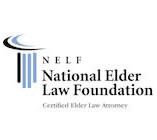A big concern for most of us is how to financially manage to stay at home as we age, despite ever increasing care needs. For those that are fortunate enough to have adequate savings, care costs may not be much of a concern. However, care costs are quite high, with average hourly rates around $25 per hour, and many find paying for care in their home outside of their means. It is not unusual for 24/7 care to cost $10,000 – $20,000 per month. Thus other resources need to be located in order to keep our elders in their home, with the proper care.
For those that were forward thinkers and purchased Long Term Care insurance, that insurance can provide payments to help offset the costs of long term care in your home. The policy typically will begin payments once the elder is unable to perform two activities of daily living. Most policies have a stated maximum payout per day, and while this will cover some basic level of care, most policies will not cover the cost of 24/7 care. However, the policies many times will provide enough funds to enable elders to remain at home with a minimal level of care.
In order to stay in their homes, some elders opt to obtain a mortgage on their home, but as a “forward” mortgage does require repayment, and has income requirements to qualify, many elders may not qualify or may not be able to maintain the monthly mortgage payments as their care costs increase. In these situations, a reverse mortgage may be a good option. A reverse mortgage allows elders to access the equity in their homes to pay for care and no repayment is required until the elder leaves the residence or passes away. While fees and interest rates on a reverse mortgage can be high, this can still be a good option for elders who are “cash poor” and “house rich”. The reverse mortgage primarily provides three payment options, with one being a set monthly payment, one being a flat amount up front, and the third option similar to a home- equity line, where the senior can draw on the funds up to a stated maximum when those funds are needed.
For our totally and permanently disabled Veterans and their spouses, or those Veterans and spouses over the age of 65, funds may be available to pay for care costs if they qualify under the asset and income limitations. Funds for Aid & Attendance are designed to supplement your resources to pay for care as the Veteran’s Administration wants you to pay for the care for which you can afford to pay. The Aid & Attendance program (pension) is not widely known, and can provide up to a maximum of $1,703 to a single Veteran or $2,019 to a married Vet, for those that qualify under the asset and income tests. These funds may be just enough to keep the Veteran and his/her spouse in their home with the necessary caregivers.
Other community resources are available to help our Elders remain in their home, and ensure that they are safe. Resources include Outreach or other transportation services, to assist with transportation when the Elder no longer drives, Meals on Wheels and other meal services, to bring hot meals and easily prepared meals, Day Programs which provides needed respite for the family caregivers and for socialization for our Elders, with many programs specific for certain conditions, for instance Alzheimer’s. If the Elder qualifies, In Home Support Services (IHSS) administered through Medi-Cal can provide limited funds for caregivers to come to the home to provide needed services.
* The information contained in this Blog is intended for general information and educational purposes only and does not constitute legal advice or an opinion of counsel.




